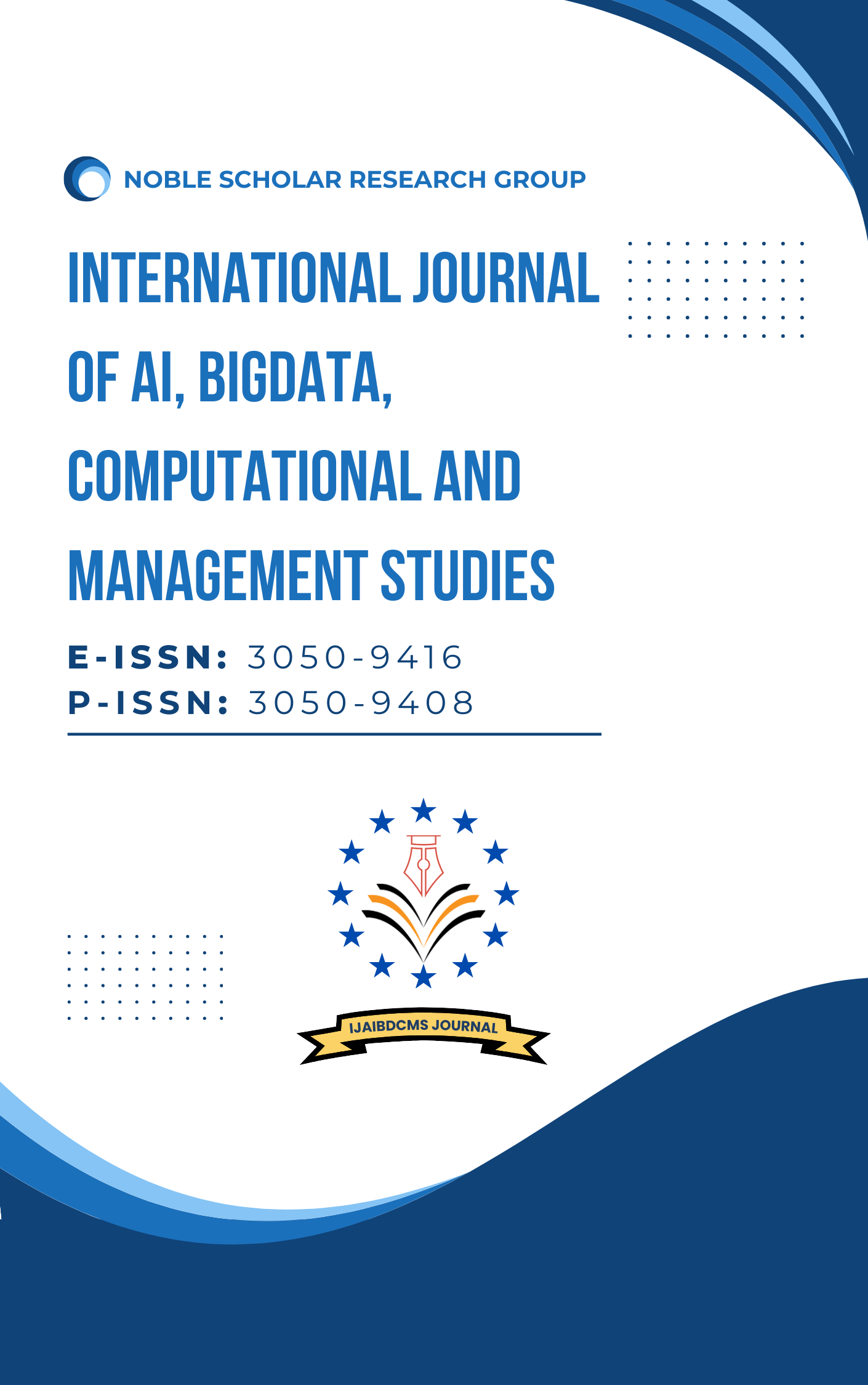IoT Architecture for Smart Systems: A Data-Driven Approach to Machine Learning and Analytics
DOI:
https://doi.org/10.63282/3050-9416.IJAIBDCMS-V4I3P102Keywords:
Data-driven IoT, Smart systems, Machine learning, Edge computing, Federated learning, Explainable AI, Data privacy, Scalability, Energy management, Predictive analyticsAbstract
The Internet of Things (IoT) has revolutionized the way we interact with technology, enabling the seamless integration of physical and digital systems. This paper presents a comprehensive data-driven approach to IoT architecture for smart systems, focusing on the integration of machine learning and analytics. We explore the various layers of the IoT architecture, including the perception, network, and application layers, and discuss how data-driven techniques can enhance the efficiency, reliability, and intelligence of IoT systems. The paper also delves into the challenges and opportunities presented by data-driven IoT, and provides a detailed case study to illustrate the practical implementation of the proposed architecture. Finally, we present an algorithm for optimizing data processing in IoT environments and discuss future research directions
References
1. Atzori, L., Iera, A., & Morabito, G. (2010). The Internet of Things: A survey. Computer Networks, 54(15), 2787-2805.
2. Gubbi, J., Buyya, R., Marusic, S., & Palaniswami, M. (2013). Internet of Things (IoT): A vision, architectural elements, and future directions. Future Generation Computer Systems, 29(7), 1645-1660.
3. Liu, J., Zhang, Y., & Gu, D. (2017). A survey on the Internet of Things: Architecture, enabling technologies, security and privacy, and applications. IEEE Internet of Things Journal, 4(5), 1125-1142.
4. Yang, K., & Liu, J. (2016). Internet of Things. IEEE Communications Magazine, 54(4), 24-29.
5. Zanella, A., Bui, N., Castellani, A., Vangelista, L., & Zorzi, M. (2014). Internet of Things for smart cities. IEEE Internet of Things Journal, 1(1), 22-32.
6. Chen, M., Mao, S., & Liu, Y. (2014). Big data: A survey. Mobile Networks and Applications, 19(2), 171-209.
7. Jordan, M. I., & Mitchell, T. M. (2015). Machine learning: Trends, perspectives, and prospects. Science, 349(6245), 255-260.
8. Chen, Y., & Liu, Y. (2018). Federated learning for edge intelligence. IEEE Communications Magazine, 57(6), 112-118.
9. Li, J., Liu, Y., & Zhang, Y. (2019). Edge computing: Vision and challenges. IEEE Network, 31(3), 66-71.
10. Ribeiro, M. T., Singh, S., & Guestrin, C. (2016). "Why should I trust you?": Explaining the predictions of any classifier. Proceedings of the 22nd ACM SIGKDD International Conference on Knowledge Discovery and Data Mining, 1135-1144.
11. https://www.scnsoft.com/blog/iot-architecture-in-a-nutshell-and-how-it-works



